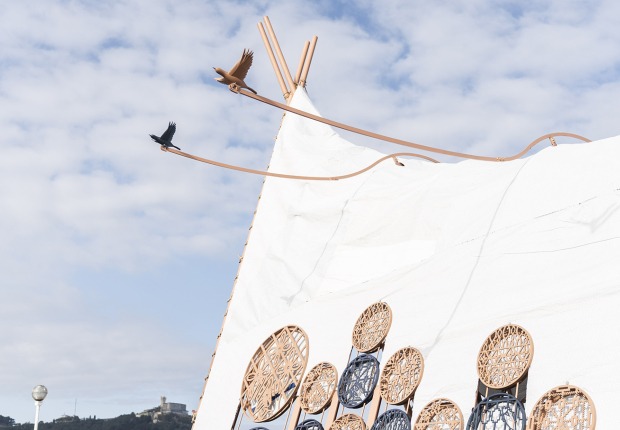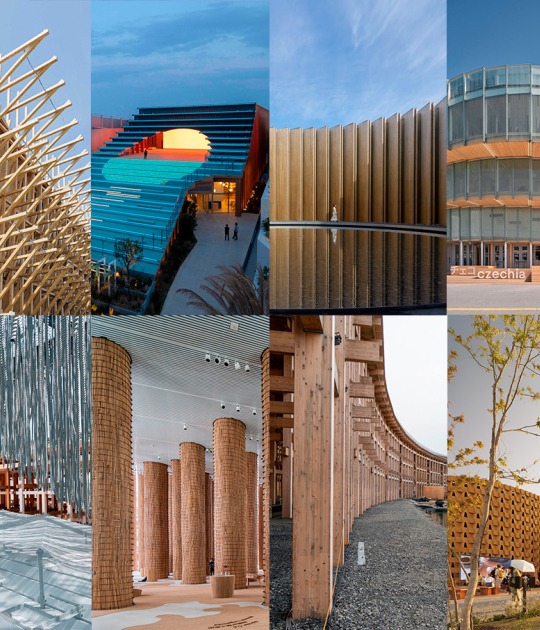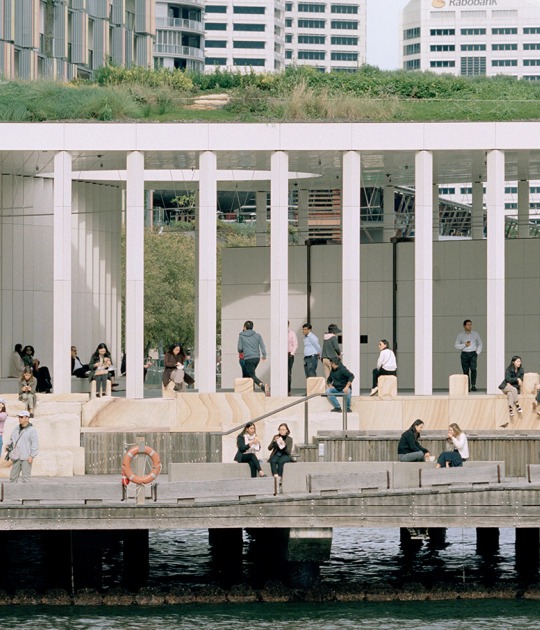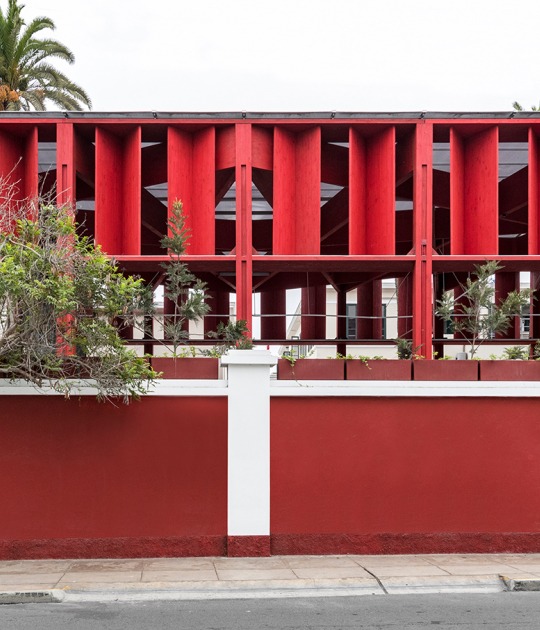Description of the project by ASIF KHAN.-
The Summer House takes a circular form whose circumference has been unpeeled to connect us and Queen Caroline's Temple to a picturesque moment left hidden by William Kent almost 300 years ago. Through sun path analysis I realised that Kent aligned the temple toward the direction of the rising sun on 1st March 1683, Queen Caroline's birthday. In our Summer House design, a polished metal platform and roof provide an intimate experience. Three 'rooms' of differing spatial quality are articulated by an undulating line of timber staves which create enclosure and direct views. The ground is a continuous gravel. As the structure meets the gravel it gently blends the horizontal and vertical, to appear as if the summer house might have grown out of the ground. Conceived as a Tea House, the project is designed to offer new experiences of the Park through dialogue with Queen Caroline's temple and the surrounding scenery.
Description of the project by KUNLE ADEYEMI - NLE.-
With a play on architecture, our design aims to fulfil the simple primary purpose of a Summer House: a space for shelter and relaxation. The design is based on projecting an inverse replica of the historic Queen Caroline's Temple - a tribute to its robust form, space and material, recomposed into a bold new sculptural object. By rotating the Temple's interior void space, we expose the structure's neo-classical plan, proportions and architectural form. Using prefabricated building blocks assembled from sandstone similar to the ones used in building the Temple, our abstracted forms come together to create a room, a doorway and a window for people to interact with the building, the environment and with one another. The carved out void, soft interior and fragmented furniture blocks create comfortable spaces for people to eat, rest or play - in and around the house - all through the summer season.
Description of the project by FRANK BARKOW and REGINE LEIBINGER.-
With Queen Caroline's Temple structure in mind, we have designed a Summer House in-theround. Standing free with all its sides visible, and conceived as a series of undulating structural bands, it is reminiscent of a blind contour drawing. The horizontal banding recalls the layered coursing of Queen Caroline's Temple, despite its idiosyncratic nature. The new Summer House is organised as four structural bands, beginning with a bench level attached to the ground, on which is a second band of three C- shaped walls crowned by a third and fourth level that forms a cantilevered roof. The Summer House is constructed from plywood and timber, materials intrinsically in harmony with the looping geometry of the structure.
Description of the project by YONA FRIEDMAN.-
The Serpentine Summer House is a 'space-chain' structure, built upon my project La Ville Spatiale (Spatial City) begun in the late 1950s, that constitutes a fragment of a larger grid structure. This original modular structure, designed for bearing light loads, consists of 30 cubes measuring 1.80 x 1.80 x 1.80 m3 built with metal rings of 1.80 m in diameter and assembled into a skeleton. Some of the cubic voids are enclosed with panels of polycarbonate. The Summer House is a space-chain construction of 4+1 levels. The cubes are composed into irregular geometrical shapes that rest on the ground.












































